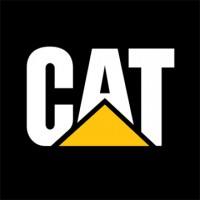Cat report shows smaller profit after sales fall in Q3; 2,100 accept buyout
- Details
- Published on Thursday, 22 October 2015 18:49
- Written by Paul Gordon
More salaried employees and managers accepted Caterpillar Inc.’s early buyout offer than even the company expected, but it still left with some tough choices as it works toward right-sizing itself in the next few years.
The company reported Thursday that approximately 2,100 of its salaried and management personnel opted to take the retirement package that included built-in incentives to make it more attractive. About half of those work in the Peoria area, the company said.
That was more than half of those deemed eligible, said Group President Brad Halverson, which was what the company hoped to that permanent layoffs could be reduced. And that’s just in the United States; the company doesn’t yet have a figure on how many in other parts of the world plan to accept the offer, he said.
But Caterpillar still plans to reduce that category of workers by at least another 1,000 worldwide by the end of the year, with notices going out starting next week, officials said when they met with the media after Caterpillar released its third-quarter financial report.
At the end of the third quarter, that report showed, Caterpillar was down more than 8,000 employees from the end of third quarter 2014. Of those, more than half were from outside the United States. None include those taking the early retirement package.
The company now has 122,879 employees worldwide.
There was little surprise in the third quarter financial report, since Caterpillar said on Sept. 24 that sales were down and that its outlook would be lowered. That’s the day Caterpillar it announced it plans to restructure and reduce its workforce by 10,000 by the end of 2018, which would bring to more than 30,000 the number of jobs it has eliminated since 2012.
Knowing the public has been curious about the early retirement offers, Halverson discussed it up front. He said the company had decided it needed to reduce the full-time salaried and management ranks by 3,000 in the United States when it made the offers.
Other areas where the company anticipates job reductions will be in hourly workers and agency workers, though it hasn’t given numbers. It also plans to consolidate some operations and close up to 20 facilities worldwide by the end of 2018.
“This is a very painful thing for us. It is not something we want to do,” said Halverson, who is also Caterpillar’s chief financial officer.
In the third quarter Caterpillar reported a profit of 62 cents a share on sales and revenues of $11 billion, well below the profit reported in the third quarter of 2014 of $1.63 a share, which was on sales and revenues of $13.5 billion.
The bigger news was that Caterpillar now expects 2016 sales and revenues to be about 5 percent lower than this year; the company forecasts that to be about $48 billion with a profit of about $3.70 a share.
“The environment remains extremely challenging for most of the key industries we serve, with sales and revenues down 19 percent from the third quarter last year. Improving how we operate is our focus amidst the continued weakness in mining and oil and gas. We’re tackling costs, and our year-to-date decremental profit pull through has been better than our target. We’re also focusing on our global market position, and it continues to improve even in challenging end markets. Our product quality is in great shape, and our safety record is among the best of any industrial company today,” said Chairman and CEO Doug Oberhelman.
“Our strong balance sheet is important in these difficult times. Our debt-to-capital ratio is near the middle of our target range at 37.4 percent; we have about $6 billion of cash, and our captive finance company is healthy and strong. We’ve repurchased close to $2 billion of stock in 2015 and more than $8 billion over the past three years. In addition, the dividend, which is a priority for our use of cash, has increased 83 percent since 2009,” added Oberhelman.
Something in that explanation pleased the investment community. Caterpillar stock finished trading on the New York Stock Exchange at $70.88 a share, which was up $1.98 as 13.4 million shares, nearly twice the normal daily volume, were traded.
History has shown that when Caterpillar gives a preliminary outlook that predicts falling sales and revenues its stock usually falls as a result.
Halverson said there has been consistency in the company’s reports, including how challenging its operating environment has been around the world. But he said Caterpillar’s performance has remained solid and profitable despite that because of measures taken earlier, since its peak financial performance in 2012. “Given the sales we had to work with, we had a solid quarter and year-to-date,” he said.
Since that time sales and revenues have fallen and will be off by $20 billion by the end of 2016. Halverson put that in perspective: “That is more than the entire annual sales and revenues of 70 percent of the Fortune 500 companies.”
That kind of drop-off, he added, “is unprecedented in company history.”
One bit of positive news, Halverson said, is that Caterpillar has increased its market share in construction equipment for four consecutive years. That in itself generates business because when Caterpillar products are being used they generate parts and service business, “which is critical to our business model.”
In its quarterly report Caterpillar said they expectation for restructuring costs for 2015 more than tripled what it originally forecast, from $250 million to $800 million. That makes a significant difference in profits; for example, it expects 2015 profit to be $3.70 a share, or $4.60 a share excluding restructuring costs.
The previous outlook for profit per share was provided in late July was $4.70, or $5 excluding restructuring costs and was based on sales and revenues of about $49 billion.
The company said it expects 2016 sales and revenues to continue to lag because of continued declines in several industries. It expects sales in Construction Industries to be flat to down 5 percent, with some improvement in developed countries offset by declining sales in developing countries. Energy & Transportation sales are expected to be down 5 to 10 percent as a result of continuing weakness in oil and gas coupled with a weaker order backlog than in 2015 and mining is expected to be down again, resulting in a decline in Resource Industries’ sales of about 10 percent, the company said.
It added that the preliminary outlook reflects weak economic growth in the United States and Europe with U.S. construction activity affected by low infrastructure investment and continued headwinds from oil and gas. It also reflects a slowing China, Brazil in recession and continuing weakness in commodity prices, the report said.
“Managing through cyclicality has been critical to Caterpillar’s success for the past 90 years; it’s nothing new for us or our customers,” Oberhelman said. “When world growth improves, the key industries we serve – construction, mining, energy and rail – will be needed to support that growth. We’re confident in the long-term success of the industries we’re in, and together with our customers, we’ll weather today’s challenging market conditions.”
Oberhelman said that while Caterpillar can’t control the business cycle it is continuing to improve its business. It also, he said, is investing in emerging technologies and data analytics tools “to continue our role as an innovation leader for our customers.”
“As we look ahead to what will likely be our fourth consecutive down year for sales, which has never happened in our 90-year history, we are restructuring to lower our cost structure. It’s painful and will affect thousands of people, but is essential for the long-term health of the company and should position us for better results when conditions improve,” added Oberhelman.
The company’s full third-quarter report, including charts, can be seen at www.caterpillar.com.



















































